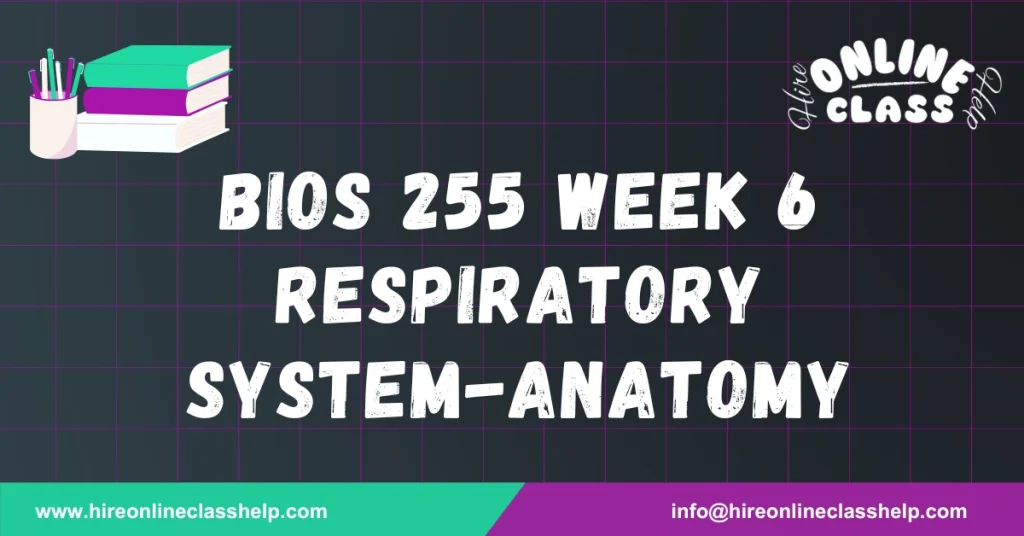






Name
Chamberlain University
BIOS-255: Anatomy & Physiology III with Lab
Prof. Name
Date
The respiratory tract serves as a conduit for air traveling to and from the lungs. When air is inhaled through the nose or mouth, it travels through the pharynx and larynx, then continues into the trachea, bronchial tree, and eventually the lungs. Inhalation relies on reducing the pressure in the lungs below atmospheric pressure to draw air in. This pressure reduction occurs by expanding the volume of the thoracic cavity. As the lungs follow the movement of the chest wall due to their encapsulation within closed spaces, this expansion facilitates inhalation. The lungs are protected by a double membrane, known as the pleural membrane. Pulmonary function can be assessed through spirometry, which measures different pulmonary volumes. Now, let’s explore the fascinating mechanics of the respiratory system!
Complete the activities related to the respiratory system in Anatomy.TV, including the upper and lower respiratory tract, pulmonary ventilation, lung volumes, and capacities.
To access Anatomy.TV:
Complete the Respiratory Anatomy Lab Report.
The purpose of this lab is to study the process of respiration, explore the respiratory organs and their functions, understand Boyle’s law in relation to thoracic cavity volume and pressure, and identify different types of respiration.
This lab involves identifying the structures of the respiratory system and tracing the flow of air into and out of the lungs.
a. Functions of the Respiratory System:
b. Anatomy of the Larynx:
In the provided image of the larynx, identify and label the thyroid cartilage, cricoid cartilage, and epiglottis.
a. Boyle’s Law:
Boyle’s Law states that the volume of a gas is inversely proportional to the pressure applied, as long as the temperature remains constant. In a closed container, when the amount of gas decreases, the volume also decreases because the container is expandable.
b. Thoracic Cavity Volume and Pressure:
When the diaphragm contracts (flattens), it moves downward into the abdominal cavity, expanding the thoracic cavity. This increase in thoracic volume decreases the pressure inside the lungs, allowing more air to flow into them.
c. Role of Surfactant in the Lungs:
Surfactant lowers surface tension at the air-liquid interface in the alveoli, preventing the alveoli from collapsing and sticking together. It keeps the alveolar surface moist and functional.
d. Pulmonary Volumes:
a. Anatomic Dead Space:
Anatomic dead space refers to the volume of air in the conducting zone of the respiratory system. This zone includes structures such as the trachea, bronchi, bronchioles, and terminal bronchioles, where no gas exchange occurs.
b. Difficulties in the Lab:
One difficulty encountered was rotating the skeleton in the lab. It would have been more helpful if the structure was more user-friendly.
a. I learned about ventilation, the process of delivering oxygen to the lungs and removing carbon dioxide.
b. I also learned about the carina, a thick cartilaginous ring located where the trachea divides into the two primary bronchi during respiration.
| Deliverable | Points |
|---|---|
| Part 1: Complete lab activities/simulation | 10 |
| Part 2: Complete lab report and answer questions | |
| – Purpose | 2 |
| – Procedure | 2 |
| – Data and Details | 5 |
| – Questions | 4 |
| – Discussion | 2 |
| – Reflection | 5 |
| Total | 30 |